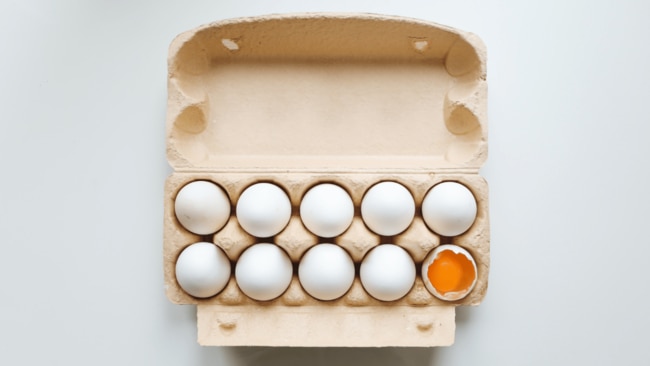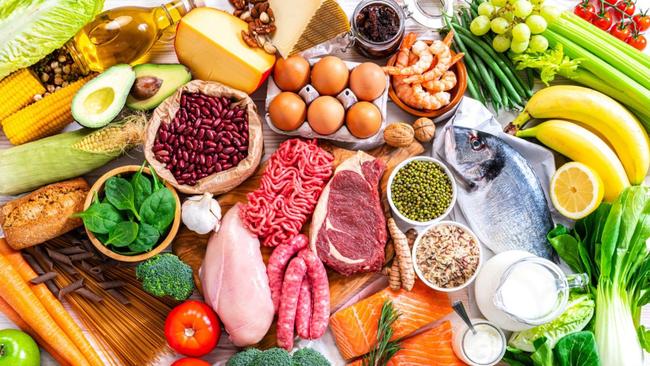5 protein mistakes you're probably making, according to a dietitian
More isn't necessarily better

Lifestyle
Don't miss out on the headlines from Lifestyle. Followed categories will be added to My News.
While most of us are aware that protein is an integral part of a healthy diet, the sources we're eating - and when we're eating it - might not necessarily be the most beneficial.
Protein is a super nutrient for a number of reasons, most notably because it's essential for muscle growth and repair. It helps to generate new skin and hair cells, and as it is digested after carbohydrates, helps to keep us full after eating.
Protein is also found in the highest amounts in foods that offer significant amounts of essential nutrients including iron, zinc and calcium, which means including them in the diet regularly helps to increase our nutrient intake overall.
Adults need at least 1g of protein per kilo of body weight to support metabolism. While we may get enough, we do not always consume the most nutrient-rich types, at the best times to optimise nutrient absorption and body composition. Ahead are some of the most common protein mistakes people make.
Like what you see? Sign up to our bodyandsoul.com.au newsletter for more stories like this.
1. Getting the timing wrong
When it comes to protein intake, more is not better, as there is a maximum amount of body is able to optimally absorb at any one time. From both an absorption perspective, and if the goal is glucose and appetite regulation, this means you are much better off consuming protein at regular intervals, rather than more than 30g at any one time (as a reference roughly 100g of meat, chicken or fish contains 20-30g of total protein).
Often the meals we choose early in the day, such as plain toast, sushi or crackers, contain much lower amounts of protein overall. Then, our intake increases through the evening with large serves of meat, chicken and fish at night.
Instead, you are better to aim for 20-30g of protein at each meal which will not only optimise absorption but support appetite control. Protein-rich breakfasts that contain 20g of protein include eggs on toast, high-protein yoghurt and smoothies or protein toast. While sashimi, tuna, salmon and cottage cheese are protein-rich lunch additions.

2. Overlooking lean options
While protein plays an important functional role in the body, the fat that can come with it, via fattier cuts of meat, chicken wings and thighs and full-fat dairy such as cheese can add much extra fat and calories to the diet.
For example, a 100g serving of chicken breast contains just 4g of fat compared to a similar weight of chicken drumsticks which contain 12g of fat per serve. As we only need small amounts of added fat in the diet, ideally from good quality oil, nuts and seeds, choose the leanest cuts of meat and chicken when you can. In the case of higher fat foods like nuts and cheese which also contain some protein, portion control is key, with a serving of cheese just 20-30g, and a serving of nuts 30g or 10-15 individual nuts.
3. Eating processed sources
While certain foods may look protein-rich, it is essential to know that more processed protein-based foods such as sausages, ham and other cold meats, frozen crumbed meats and premade meals are much lower in protein than whole food sources like eggs, chicken breast and other meats.
For example, a 50g piece of chicken contains 13g of protein compared to just 8g for a similar serve of ham. For this reason, the less processed proteins you include in your daily diet, the better when it comes to both general health as well as protein intake.

4. Not doing the maths on plant-based picks
While there is protein in many foods, the amounts differ, as does the quality of the protein. Animal-based proteins naturally offer the full range of amino acids, known as complete protein, while plant-based proteins often need to be combined to achieve this complete mix. Or, in the case of plant-based milks, yoghurts or meat substitutes, they may not contain much protein at all even though they are referred to as milk or yoghurt.
For example, while a cup of cow’s milk contains 8g of protein, an almond or oat milk may only contain 1-2g of protein. For this reason, if plant-based protein is your preference, always check your food labels and look for varieties that contain at least 5g of protein per serve.
5. Skipping protein in the afternoon
What do you usually grab as a snack? Fruit? Nuts? A muffin? Hummus and rice crackers? Our typical, go-to snacks tend to be extremely high in refined carbohydrates and low in protein, which leaves us vulnerable to blood glucose fluctuations and incessant hunger. Inadequate protein through the afternoon also leaves us prone to overeating late afternoon before dinner.
Higher protein snack options that offer 10-20g protein per serve are smarter options to help keep glucose levels more tightly controlled, which in turn will help to keep our appetite controlled in between meals. Good options include cottage cheese and crackers, protein yoghurt and fruit or a slice of protein toast and nut spread, ideally teamed with some fresh food such as berries or chopped vegetables to create a balanced mid-meal.
More Coverage
Originally published as 5 protein mistakes you're probably making, according to a dietitian





